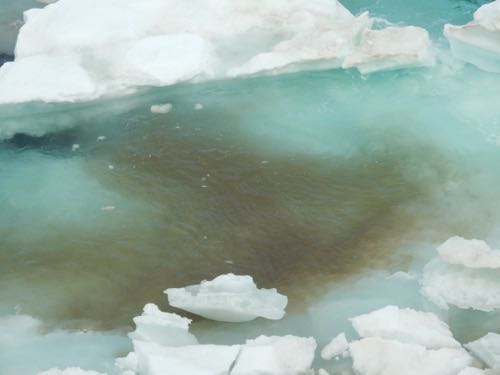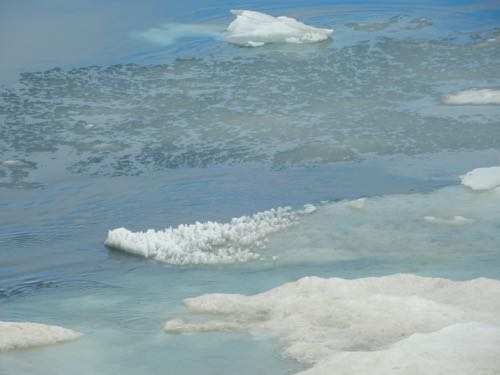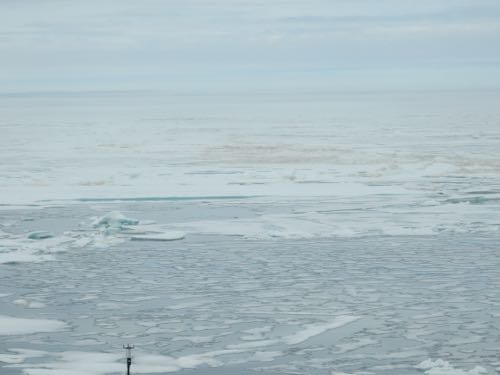Today's "Science Talk", presented by Eric Collins and Kyle Dilliplaine, gave me a whole new perspective of ice. Divided into two components - ice formation and organisms living in the ice - the session was very informative. Considering the quantity of ice that covers Earth, the organisms that make their homes in the ice can be pretty important.
I learned that ice is a composite that includes ice crystals and interstitial brine, as well as the organisms that often live within the interstitial channels. Sea iceThere are terms for different types of ice. Shorefast ice forms along coasts and is attached to land. Pack ice is ice floating in open water. Multiyear ice is ice that has survived at least 1 summer. First year ice is ice that has not yet survived a melting season. begins as "frazil" which is about 1-2 mm thick and may then aggregate into sheets to form grease ice. In addition to around one thousand species of phytoplankton found in ice, tiny animals including polychaetes, copepods, nematodes, and cnidarians make their homes in ice brine channels. According to Dilliplaine, this makes sea ice more greatly enriched in biota compared to the underlying water. According to Collins, the interstitial channels found within ice can be as much as 5 to 6 times saltier than the surrounding seawater; thus categorizing many of the organisms found in sea ice channels as extremophiles.
Notice the large aggregate of algae in this ice. When the ice melts, the algae will drop into the water column, providing food for other organisms.

Can you see the new "skin" of ice forming?

This is referred to as "pancake" ice.

PolarConnect
Don't forget to sign up for the upcoming PolarConnect. This is a great opportunity to learn more about the expedition and to ask the scientists questions. The event is free, but you must register. Information may be found at https://www.polartrec.com/polar-connect/register
Question and Answer
Answer to Previous Q: The mystery photo is of walrus vibrissae, or bristles. These bristles are very sensitive and help to make up for a walrus's poor vision when seeking a tasty mollusk meal on the seafloor.


Comments